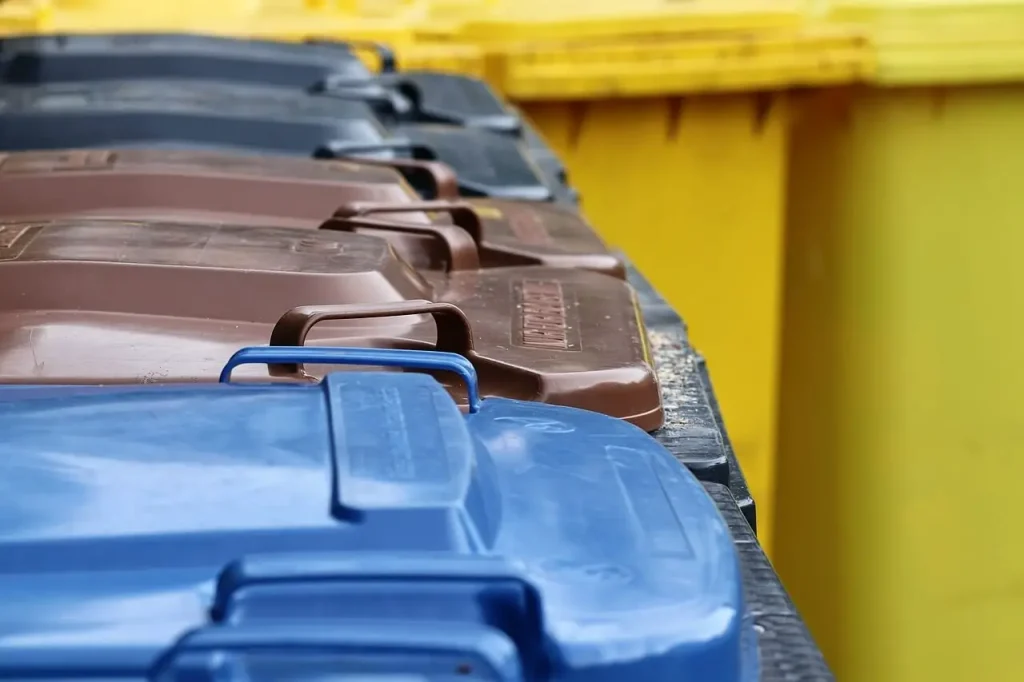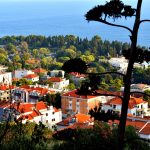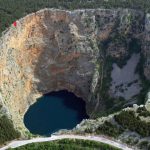Annual reports on waste collection in Croatia issued by the Ministry of Economic and Sustainable Development regularly present sad news about Dalmatia. Namely, it shows a severe civilizational lag in the south compared to the north, reports Slobodna Dalmacija.
Statistics show that Dalmatia, together with Lika and Brod-Posavina County, is at the bottom of Croatia when it comes to waste separation. But there is tourism here, and the state invests in infrastructure and development, so it makes no sense to compare it with poorer parts of Croatia and where life is objectively more challenging.
Data on waste separation collection in 2020 show that Split is in last place among the big cities in Dalmatia. Dubrovnik has a collection rate of 11.16 percent, followed by Sibenik, which last year still rose with a rate of 6.55 percent. On the other hand, Zadar fell from 7 percent to 6.20 percent last year, while Split is at the bottom of the scale with 5.80 percent. Compared to 2019, Split even improved because it had a disgraceful 3.74 percent two years ago, but even with that miserable shift, it did not move further than the last place.
Moreover, when we move outside the framework of Dalmatia, Split is convincingly in last place among the big cities in Croatia regarding waste separation. This year, Rijeka recorded 14.21 percent, while Zagreb separates 29.74 percent, and Osijek as much as 38.69 percent, which is an improvement from 28.67 percent in 2019.
The record holders are again in Međimurje. Čakovec is at 48.95 percent, and some of their municipalities, such as Belica, separate 79.76 percent of waste. In fact, in Međimurje County, eight municipalities separate more than 60 percent of waste, above the required EU standards.
In terms of municipal waste management, as in 2019, the highest rates of recovery and recycling of waste are still recorded in Međimurje County (58 percent), Varaždin County (53 percent) Koprivnica-Križevci County (50 percent), and the City of Zagreb (48 percent).
On the other hand, the counties where waste is least recycled are Zadar County (20 percent) and Lika-Senj County (20 percent). They are followed by Brod-Posavina (23 percent), Split-Dalmatia (24 percent), Šibenik-Knin (25 percent), and Dubrovnik-Neretva County (25 percent).
Another indicator that shows just how bad it is in Dalmatia is shown in the example of Zadar County, where most construction is currently underway in Croatia. Unfortunately, Zadar County is at the bottom of the scale and the most economically underdeveloped part of Croatia.
Most municipal waste in Croatia was disposed of in Zadar, in the Diklo area, as much as 320,905 tons. It should be emphasized that this is almost twice as much as Zagreb’s Jakuševac, where 189,975 tons were disposed of, or Split’s Karepovac, which is third on the list where 116,876 tons were disposed. Much less mixed municipal waste is disposed of in Zadar than in Zagreb and Split, but it is not explained what the 247,651.71 tons of ‘other waste’ disposed of in Diklo in 2020 refer to.
The director of Zadar’s “Čistoća” Ivan John Krstičević said that “this is a large amount of excavation that ends at two landfills in that landfill.”
Last year, 103,015 tons of mixed municipal waste were disposed of in Karepovac; in fact, almost everything that ended up there falls into that category.
It cannot be said that nothing happens in Dalmatia when it comes to waste, but it is going very slowly. In Zadar, Diklo should stop being a landfill, fortunately for the surrounding locals, when the Biljana Donja Waste Management Center starts operating, and commissioning is expected in the middle of next year. At the end of this year, the CCE Bikarac should start trial work in Šibenik-Knin County.
Split is also at the bottom. The Center for Waste Management in Split-Dalmatia County in Lećevica has been questioned by associations, locals, and some scientists as environmentally unacceptable. Still, it is equally questionable whether it will ever be built. Big money was spent, jobs were created, people were employed in the county’s “Regional Clean Environment Center.” Some retired from that position, but nothing has moved in two decades without anyone responding.
Presenting the Municipal Waste Report at a press conference, Minister of Economy and Sustainable Development Tomislav Coric boasted that Croatia ended last year with 41 percent of separated municipal waste, saying it was an increase of four percent compared to 2019. But he noted that last year was a “pandemic year” marked by a reduction in the work of the service sector.
In other words, there was much less tourism last year than in previous years, so the results on that success are relative. This is especially true for Dalmatia. As a result, the amount of waste is smaller, but, unfortunately, the backlog in separation and recycling is equal.
In Split-Dalmatia County, there are five municipalities with no waste separation (i.e., 0.00 percent), namely Jelsa, Prgomet, Seget, Sućuraj, and Šolta, while Hrvace is at 0.05 percent of separation, and Muć at 0, 06 percent. According to them, Vrgorac is “advanced” with 0.16 percent.
In Šibenik-Knin County, Kistanje, Kijevo, Ervenik, Civljane, Murter and Promina are at “zero”, and in Zadar County, Lišane Ostrovičke, Pakoštane, Polača, Povljana, Sali and Stankovici do not separate anything. In Dubrovnik-Neretva, the municipalities of Janjina, Kula Norinska, Lumbarda, Opuzen, Pojezerje, Smokvica, Ston, Zažablje are without separation.
Of course, there are brighter examples, like Lastovo, in Dubrovnik-Neretva County, which reached an incomprehensible 40.82 percent for Dalmatia. There, waste separation actions were initiated by associations, the Municipality of Lastovo, the local Komunalac, the Lastovo Islands Nature Park, and obviously, the results were not lacking. For several years in a row in Split-Dalmatia County, Omiš has been praised. This year, it reached 20.70 percent, and Dugi Rat equaled it, which, therefore, shares first place in the largest Dalmatian county.
But when you look at the waste management map in the report, it turns out that the northern regions are more advanced in waste recycling. For example, no southern part of Croatia has a composting plant. In fact, in the results for last year, we cannot say that tourism is an aggravating circumstance for Dalmatia, which otherwise produces a significant amount of waste because it was significantly less than in previous years.
It would be unfair to say that nothing is being done. Split has reduced the amount of waste disposed of at Karepovac, and compared to 2018; it has doubled the amount of waste collected separately from 1,614 to 3,136 tons. It has also increased the number of stationary and mobile recycling yards. But that’s all too little to avoid the penalties cities have to pay if they don’t reach specific recycling percentages.
Namely, according to the “Decree on Municipal Waste Management,” cities and municipalities are obliged to pay an incentive fee for reducing the amount of mixed municipal waste. It is a measure that encourages local self-government units to reduce the amount of mixed municipal waste. As confirmed by the Fund for Environmental Protection and Energy Efficiency, the Fund collected HRK 46.9 million from municipalities and cities in Croatia last year because, in 2019, they did not separate enough mixed municipal waste. Thus, the City of Zagreb had to pay HRK 8.8 million, Osijek HRK 922 thousand, and Rijeka HRK 1.6 million. Of the Dalmatian cities, Split had to pay 3.2 million kuna, Zadar paid penalties of 1.6 million kuna, Šibenik 825 thousand kuna, and Dubrovnik 944 thousand kuna.
It is unknown how much Dalmatian and Croatian cities and municipalities will pay for 2020 because last year’s data will be calculated at the end of 2021 after receiving a report from the relevant Ministry.
According to the World Bank, Croatia generally lags behind European waste management directives, so the question is whether it will avoid penalties that would amount to 42,000 euros a day. In 2020, Croatia was supposed to reach 50 percent separate separation, and last year the country ended up with 41 percent. However, it was a pandemic year, as Minister Ćorić admitted. Otherwise, it isn’t easy to approach the set norms. For some, the question is whether Croatia will fulfill them, as is the case with Karepovac, given the “Lecevica case.”
Since the population’s education is emphasized as one of the goals, it is not out of place to know that Čistoća Split has spent around one million kuna on education in the last two years.
Given that the new Split government, led by Mayor Ivica Puljak, has announced a cleaner Split as one of its strategic goals, we will see if Split can move from the infamous place of the worst city when it comes to waste management.
For more on lifestyle in Croatia, follow TCN’s dedicated page.









